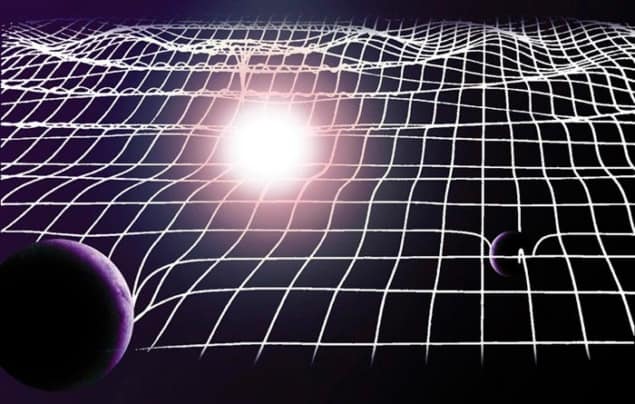
Astronomers could be on the cusp of detecting gravitational waves after four decades of trying, according to a team of Polish astrophysicists. They say that if current gravitational-wave detectors are upgraded to search for binary black-hole systems, gravitational waves would be expected “within the first year of operation”. If correct, it would open up a new window to the cosmos, allowing astronomers to see the universe with fresh eyes.
Unlike waves of light which travel through space, gravitational waves are ripples in the fabric of space–time itself. Sources of these waves, which were predicted by Einstein’s theory of general relativity, include binary systems of compact objects such as neutron stars and black holes. As one of the duo inspirals toward the other, gravitational waves propagate out into space.
Searches for gravitational waves, such as the Laser Interferometer Gravitational-Wave Observatory (LIGO), have concentrated on binary systems of two neutron stars because they were thought to be more numerous, despite being weaker sources than rarer double black hole systems.
Wrong decision
However, a team of researchers, led by Chris Belczynski of the Los Alamos National Laboratory, report that these projects have taken the wrong option, saying that double black hole systems may be far more common than previously thought. The reason is related to stars’ metallicity, which is the fraction of elements that are heavier than helium. The lower the metallicity the less mass is lost at the end of the star’s life and therefore the black holes that form are more likely to survive to become a black hole binary.
Until now, models have assumed that most stars had a similar metallicity to the Sun. But by analysing data from the Sloan Digital Sky Survey, Belczynski and his team found that this is only true for 50% of stars, while the rest have a significantly lower metallicity, at 20% of the Sun’s.
The finding is particularly significant given the sensitivity of black hole binary formation to changes in metallicity. “If you reduce metallicity by a factor of ten then you increase the number of black hole binaries by a hundred or a few hundred times,” says Tomasz Bulik, one of the researchers at the Nicolaus Copernicus Astronomical Center in Warsaw.
Imminent upgrades
The current generation of experiments that are searching for gravitational waves, such as LIGO and fellow detector VIRGO, fall short of the sensitivity that Belczynski’s team predicts is required. However, ten-fold upgrades for both are imminent. “The upgrades mean that we are looking at reaching sensitivities at which this paper suggests we are guaranteed to see something,” explained Stuart Reid, a gravitational wave researcher at the University of Glasgow, who is not involved in this research.
Intermediate upgrades to VIRGO could be online as early as this autumn, bringing the instrument to the edge of the range of sensitivities predicted by Belczynski. Both detectors are due to be fully upgraded by 2015. Should they find gravitational waves it would open up new possibilities for probing the cosmos, allowing astronomers to become stellar cartographers.
“As a neutron star inspirals into a black hole, gravitational waves are emitted, mapping out the space–time curvature formed by the black hole. Measuring those waves tells us how the black hole affects objects around it,” says Reid. Gravitational wave astronomy also has advantages over electromagnetic radiation. “It’s difficult to account for how light is affected as it travels towards you. Gravitational waves’ interaction with matter is very weak, so you don’t get the same distortion,” he added.
The research is published on arXiv.



